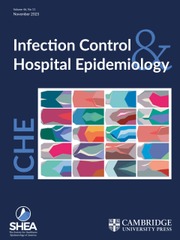No CrossRef data available.
Article contents
Which is the safer option for adult patients between peripherally inserted central catheters and midline catheters: a meta-analysis
Published online by Cambridge University Press: 13 November 2024
Abstract
Peripherally inserted central catheters (PICC) and midline catheters (MC) are widely used for intravenous infusions in oncology and critically ill patients. However, controversy remains regarding which method is superior. This meta-analysis systematically compares the safety differences between these 2 methods of intravenous catheterization.
Eligible studies comparing PICC and MC were identified through searches in 6 databases. Thrombosis is the primary endpoint, while secondary endpoints include other complications, cost, and satisfaction rate.
Fourteen studies with 20,675 patients were analyzed. Based on patient data, the MC group exhibited higher rates of catheter-related superficial vein thrombosis (SVT) (risk ratio [RR]: 0.42 [0.28, 0.64]), infiltrations (RR: 0.27 [0.12, 0.62]), and leaks (RR: 0.16 [0.05, 0.53]). In contrast, the PICC group had more catheter-related bloodstream infections (RR: 1.95 [1.15, 3.32]). Considering catheter days, the MC group showed increased total complications (RR: 0.51 [0.26, 0.99]), catheter-related thrombosis (deep vein thrombosis [DVT]+SVT) (RR: 0.41 [0.18, 0.95]), and leaks (RR: 0.17 [0.05, 0.64]). In the PICC group, the top 3 complications were catheter occlusions (20 per 1,000 catheter days [CDs]), pain (15 per 1,000 CDs), and phlebitis (11 per 1,000 CDs); for the MC group, they were leaks (33 per 1,000 CDs), premature removals (22 per 1,000 CDs), and catheter-related DVT (22 per 1,000 CDs). Additionally, the PICC group had higher dissatisfaction rates (RR: 4.77 [2.33, 9.77]) and increased costs.
Compared to MC, PICC appears to be a safer intravenous catheterization option for adult patients, exhibiting fewer complications. However, the higher associated costs and lower satisfaction rates of PICC warrant serious attention.
- Type
- Original Article
- Information
- Copyright
- © The Author(s), 2024. Published by Cambridge University Press on behalf of The Society for Healthcare Epidemiology of America



